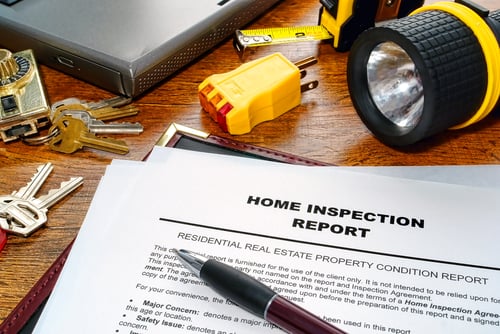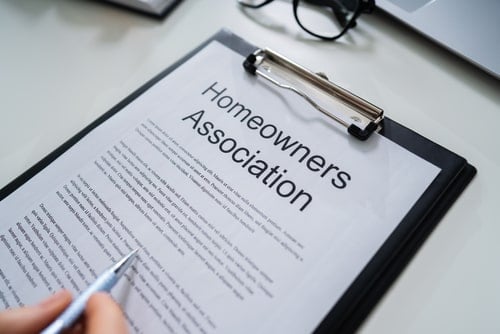
When embarking on any real estate investment transaction, due diligence plays a vital role. However, some landlords may find this to be a confusing and lengthy process. That said, these actions help determine whether or not a property will provide the necessary return to become profitable. Join us below as we review the meaning of real estate due diligence, help buyers set up an investment property checklist, and discover why all of this is indispensable to landlords.
What is Real Estate Due Diligence?
According to the dictionary, real estate due diligence includes “reasonable steps taken by a person to satisfy a legal requirement, especially in buying or selling something.” So, in other words, investors complete real estate due diligence as a means to confirm the facts and details of the property they buy. That said, this is a complex task that landlords should not take lightly. Therefore, the goal is to make an informed purchase with no last-minute surprises.
The Types of Real Estate Due Diligence
Real estate due diligence is not a one-and-done process. In fact, there are many levels at various stages in a property deal. That said, all steps are critical to making a solid business decision. Follow along with us below as we delve deeper and break down the investors’ real estate due diligence process.
Categories of Real Estate Due Diligence
- Analyze the Location
- Estimating After Repair Value
- Pro Forma Report
- Renovation Costs
- Understanding Contracts
- Property Inspections
- Financial Check-up
- Legal Matters
 How to Analyze the Location as Part of Due Diligence
How to Analyze the Location as Part of Due Diligence
The most important rule in real estate is location, location, location! Therefore, investors want to be sure they are choosing the right neighborhood to invest in. So, consider these important factors below to decide if the location is the right choice for your rental property business.
- Crime Rate – Tenants and residents, in general, want to feel secure in their homes. Therefore, check local police records or online crime statistics and avoid high-crime areas.
- Population and Business Growth – If the area has a steady upswing of businesses and people drawn to the area, this is a good sign. Businesses bring jobs, help boost household income, and attract new residents.
- School Ratings – Not every renter will need to care about the school system. However, a good school district signals a desirable area for renters and adds to the resale value, especially single-family homes.
- Occupancy Rate – Tons of units on the market could signal a seasonal trend or a sign of trouble. So, check into local comps in the area, average rental rates, and units recently rented. High inventory and low demand mean landlords may need to drop prices to fill units, which cuts into profits.
How to Estimate After Repair Value or ARV
Knowing the ARV or after repair value of a prospective property is critical to determining whether a property will be successful. So, always complete real estate due diligence and check the numbers yourself. To figure out ARV, look into recent comparable sales in the area and follow along with the steps below –
How to Calculate ARV?
- (Purchase Price) + (Value Added through Renovation) = After Repair Value
- (ARV x 70%) – Estimated Repair Cost = Maximum Purchase Target
- ARV x 65% = Maximum Loan Amount
Why Investors Need a Pro Forma Report
For investors, a pro forma is often provided by the seller and includes the property’s rental income and expense history. Therefore, this information could make or break a sale for an investor looking for a historically profitable property. Whether the repost uses actual or estimated income and expenses, investors need to pay close attention.

The net operating income estimated through the pro forma report get incorporated into many other equations such as –
- Cap Rate
- Cash-on-cash Return
- ROI (Return on Investment)
Therefore, these estimates and figures must be as accurate as possible. Failing to ensure these numbers are accurate could lead investors to a detrimental investment decision.
The Dangers of Pro Forma Reports
It is in the seller’s best interest to showcase their listing in the best possible light. So, when an investor chooses to only consider figures on a seller’s pro forma without verifying numbers independently, they face risks. Inflated value could cause investors to pay a higher down payment or face decreased profit margins down the road. Therefore, the important thing to remember is if it sounds too good to be true, it probably is. Check out these red flags to look out for below –
- Understated Vacancy Rate – Calculating vacancy rate based on a gross income percentage could yield an unrealistic result. Instead, research the local market to evaluate the true vacancy rate is in the immediate neighborhood.
- Optimistic Appreciation – Multi-year pro formas may assume that rental income will rise consistently at the rate of inflation. However, this may not prove true in a competitive market.
- Lump-sum or Missing Expenses – Sometimes, sellers may choose to lump expenses together as a percentage of gross income. The downside is this may not reflect the true cost, and expressing each expense as a dollar amount line item provides a clearer picture. Additionally, missing expenses present a problem for investors. So, check to ensure items such as taxes, HOA fees, and insurance are accounted for on the pro forma.
Pro Tip: Looking for more information on what is included in a real estate pro forma? Check out this article with quick access Excel template to get you started!
Steps to Estimating Renovation Costs
As an investor, getting in-depth estimates for rehab needs is not always realistic during the buying process. However, there are ways to estimate costs effectively. While no formula is perfect, learning the basics can help investors run the numbers and evaluate prospective properties. Let’s review the process below –
- Know the Neighborhood
- Tour the Property
- Note Problem Areas
- Organize Repairs into Categories
- Determine Rehab Cost in Each Category
Know the Neighborhood
Luxury renovations tie up valuable time and money. So, if the neighborhood does not support a luxury rental, sticking to basic cosmetic fixes is far more economical. Check comps and ensure that renovations fall in line with the neighborhood and projected rental rate.
Tour the Property
The only way to get an accurate picture of the work needed is to tour the property. Therefore, take your time and take lots of photos to document the overall condition and any areas of concern.
 Note Problem Areas
Note Problem Areas
Make a note of any repairs or cosmetic changes that the property needs. Also, as part of real estate due diligence in estimating costs, jot down the rooms’ general square footage. This is especially helpful with flooring estimates! Additionally, closely examine the exterior of the home, as repairs here can get expensive quickly.
Organize Repairs into Categories
Once you have a renovation list, break it down into easily estimated categories such as interior, exterior, and general components. Thankfully for landlords, there are great comprehensive tools to assist with estimating rehab needs. For example, check out The Book on Estimating Rehab Costs by J. Scott. This easy read is a wealth of information any investor can benefit from covering everything from cosmetic renovations to complex upgrades.
Determine Rehab Cost in Each Category
Breaking down items into categories and understanding what volume of materials needed will help investors estimate potential costs. From there, investors can work with a contractor to identify rough estimates of materials and labor for the list of repairs. Keep in mind, this is only a rough estimate, and it is a good idea to budget for contingencies.
Understanding Contracts and Sales Timelines
To be successful through the real estate due diligence process, understanding the timeline is critical. As soon as a contract is signed, the clock is ticking for investors to complete due diligence and the steps they need to make an informed decision.
Typically, residential property sales contracts stipulate a 30-day window to close. Furthermore, there is usually a 15-day window before the earnest money deposit is no longer refundable. If the property is multi-family, these timelines extend to 60 days to close and 30 days before earnest money “goes hard.”
So, investors have limited time to complete real estate due diligence before a sale, so use the time wisely. For larger transactions or properties that need extensive rehab, quickly negotiating an extended inspection period may be in your best interest.
 Tips for Completing Property Inspections
Tips for Completing Property Inspections
Touring and inspecting every part of the property is the best thing an investor can do to get an accurate picture of its true condition. If the prospective property is multi-family, go through every unit systematically. This is the only way to truly know what you are buying. Between the investor walk-through noting items needed in renovation and a home inspection, the goal is to evaluate the following –
- Overall Physical Condition of the Property
- Determine the Existence of Hazardous Substances or Environmental Problems
- Verify Square Footage and Lot Size
- Access Exterior Condition (Roof, Foundation, Walls)
- Evaluate Major Systems (Plumbing, Electrical, HVAC, Appliances, and Mechanical Units)
- Identify Any Property Use Restrictions
- Review Associated Fees (HOA, Municipal Services, Utility Charges)
Specialized Inspections Investors Should Consider
- Lead, Asbestos, and Radon Inspections – For properties built before 1978, a lead inspection is essential. If lead is found, remediation is an expensive undertaking that investors must weigh carefully.
- Termite Inspection – If any damaged joists or mud tunnels are noticed, a pest control expert can inspect for termites. Termites cause a great deal of damage in a short time and must be cleared out as soon as possible.
- Phase One – Landlords may need this environmental survey for multi-family or commercial properties.
- ALTA Survey – Typically reserved for larger properties, an ATLA survey assists when the property boundaries are not clearly defined.
It helps investors to use a checklist or guide to ensure they do not miss any items that may become costly during the renovation process. Accurately evaluating conditions is necessary to effectively stay within budget and reach the profit margins landlords need. So, take your time!
Financial Check-Up and Important Documents in Any Real Estate Deal
Financial documents are another key part of real estate due diligence, especially if the property is already tenant-occupied. Generally, some sellers may withhold key documents until the property is under contract but be sure to request them as soon as possible. If there are issues providing them, this should raise red flags.

Once investors have documents in hand, review them carefully and then give them a second look to not miss any details. Let’s review what documents investors should expect to see as part of their real estate due diligence below –
- Rent Roll – Showing all tenants, contact info, rental amount, payment history, and lease dates.
- T-12 Operating Statement – Ideally, this should include data from the last three years, but 12 months is minimal.
- Delinquency Report – This shows the investor who is behind on rent and any outstanding balances.
- List of Capital Improvements – Items include adding an addition, renovating the kitchen, replacing the roof, or any significant upgrades.
Additionally, if the property is tenant-occupied, investors need to request copies of any current leases. As the buyer, you inherit these existing tenants and need a clear picture of what you are signing up for to plan necessary actions. When reviewing leases, look for the following –
What to Look for in Existing Leases
- Lease Type – Is it month-to-month, annual, or something else?
- Rental Rate – Lease should match the rent roll amounts.
- Security Deposit – This too should match the rent roll documentation.
- Late Fees – What is the current policy?
- Pet Policies – Does the lease allow pets? Are there any added charges, or does the tenant have pets?
- Utility Information – Find out if the tenant pays all utilities or if the landlord is responsible for any or all set-up or charges.
- Addendums – Look for any special circumstances or arrangements in lease addendums.
Verifying Legal Matters in Rental Property Due Diligence
Part of the rental property due diligence process is double-checking legal matters that will affect your business goals. No matter the investor’s experience level, it is always advisable to consult a qualified legal professional for all real estate transactions. Continue reading below as we review a couple of examples of potential legal troubles.
 HOA or Homeowner’s Associations
HOA or Homeowner’s Associations
HOA fees can drastically eat away at a landlord’s profits. Also, condos, in particular, may assess added fees to cover building repairs. So, keeping a reserve of funds on hand is important. That said, another consideration is the sometimes extensive restrictions that HOA bylaws may impose. For example, some may restrict or even prohibit certain types of rentals. Additionally, if the HOA permits rentals, there may be special regulations or procedures the owner and tenant must adhere to.
Property Use Restrictions
It is important to note that laws and codes vary from location to location. So, investors should verify that a rental home is legally permitted, especially if the home was a conversion. If the property is one you intend to convert into multiple units, check with the local zoning office to ensure this can be done before proceeding.
Title and Tax Searches
A title company is a standard fixture in the real estate closing process. They will investigate the property’s chain of custody and identify any potential issues or outstanding liens. The benefit for investors is that should the title company miss any issues, title insurance picks up the tab.
The Easiest Way to Manage a Rental Property Portfolio
As an investor, the team you have around you of realtors, lawyers, title companies, inspectors, contractors, and vendors is vital to your overall success. However, there is another facet to running a rental property business that extends far beyond closing, and that is property management.
Professional rental management firms assist with leasing, maintenance needs, and tenant communication to allow owners to do what they do best, chase the next big deal! Bay Property Management Group is Northern Virginia’s leading expert in all aspects of rental property operations. Our team can effectively manage your property or portfolio to maximize ROI and minimize vacancy. Give us a call today for a free no-obligation rental home analysis to see what we can do for you!

 How to Analyze the Location as Part of Due Diligence
How to Analyze the Location as Part of Due Diligence Note Problem Areas
Note Problem Areas Tips for Completing Property Inspections
Tips for Completing Property Inspections HOA or Homeowner’s Associations
HOA or Homeowner’s Associations